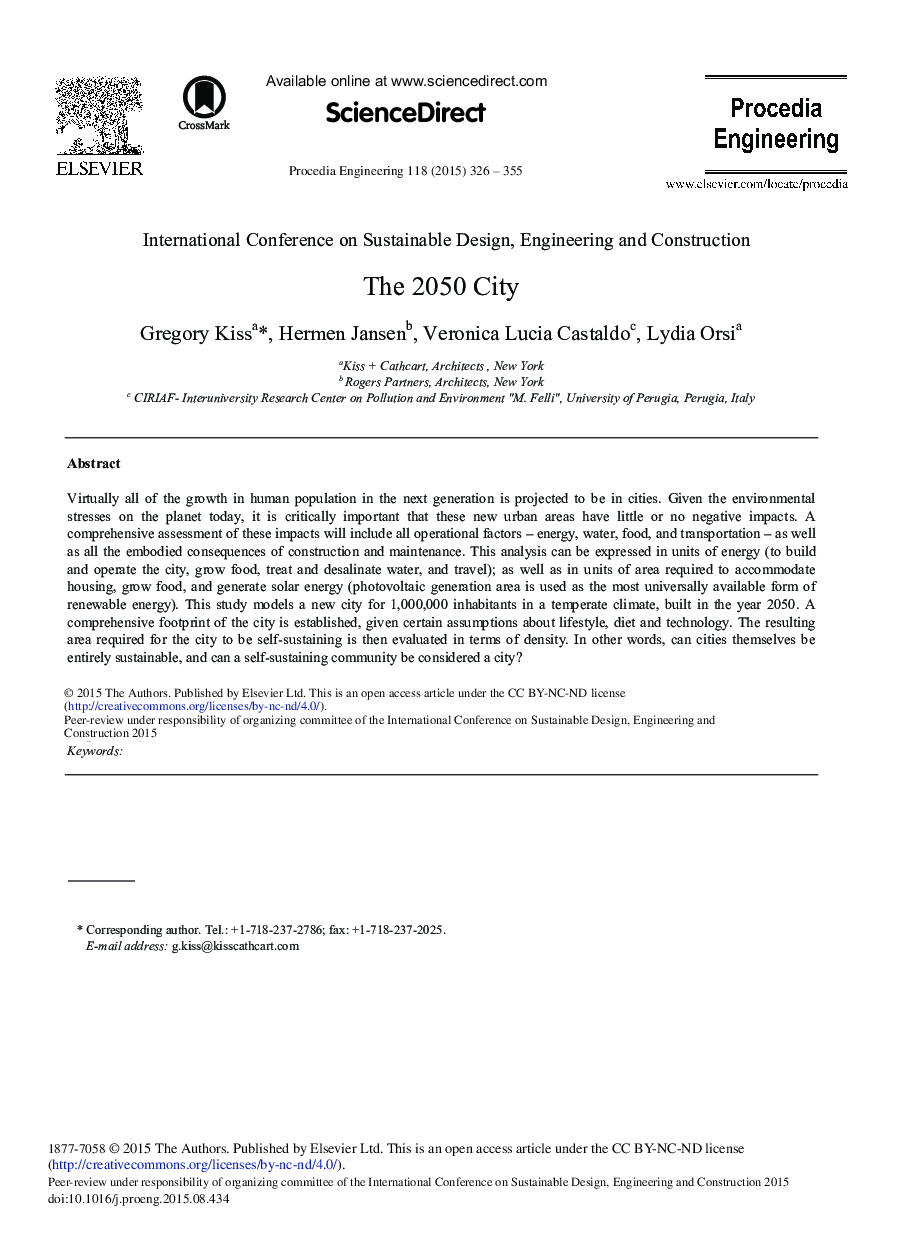| Article ID | Journal | Published Year | Pages | File Type |
|---|---|---|---|---|
| 855610 | Procedia Engineering | 2015 | 30 Pages |
Virtually all of the growth in human population in the next generation is projected to be in cities. Given the environmental stresses on the planet today, it is critically important that these new urban areas have little or no negative impacts. A comprehensive assessment of these impacts will include all operational factors – energy, water, food, and transportation – as well as all the embodied consequences of construction and maintenance. This analysis can be expressed in units of energy (to build and operate the city, grow food, treat and desalinate water, and travel); as well as in units of area required to accommodate housing, grow food, and generate solar energy (photovoltaic generation area is used as the most universally available form of renewable energy). This study models a new city for 1,000,000 inhabitants in a temperate climate, built in the year 2050. A comprehensive footprint of the city is established, given certain assumptions about lifestyle, diet and technology. The resulting area required for the city to be self-sustaining is then evaluated in terms of density. In other words, can cities themselves be entirely sustainable, and can a self-sustaining community be considered a city?
